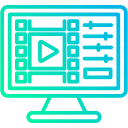Understanding the Root Causes of High Employee Turnover During Onboarding
Employee turnover during the onboarding phase poses a significant challenge for many organizations, impacting productivity, morale, and recruitment costs. A primary factor behind early departures is an ineffective onboarding process. When new hires lack a structured, engaging, and informative onboarding experience, they often feel disengaged, undervalued, or overwhelmed, increasing their likelihood of leaving early.
Research shows that approximately 20% of employee turnover occurs within the first 45 days of employment, highlighting the critical importance of effective onboarding strategies (Harvard Business Review). This initial period sets the foundation for an employee’s overall experience, influencing their engagement, job satisfaction, and long-term commitment.
A key reason for high turnover during this phase is **insufficient integration into company culture**. New employees need clear insights into organizational values, expectations, and their role within the mission. Without this understanding, they may feel disconnected or uncertain about their fit, prompting them to seek opportunities elsewhere.
Another common issue is **lack of structured training and development opportunities**. When onboarding lacks a comprehensive learning framework, new hires may struggle to acquire essential skills or knowledge, leading to frustration and early disengagement. This absence of guidance can foster feelings of unpreparedness, reducing confidence and motivation.
Additionally, **poor communication and limited support** during onboarding can intensify feelings of isolation. Effective onboarding involves regular feedback and mentorship, often neglected in disorganized processes. This oversight can lead to misconceptions about the role or organization, increasing attrition risk.
Ultimately, organizations that neglect a structured onboarding process risk higher early turnover rates. Implementing a well-designed onboarding program that includes clear learning paths, cultural integration, and ongoing support is vital for retaining new talent. By investing in quality onboarding, companies can foster engagement, reduce early exits, and lay the groundwork for long-term success.
Start Scaling Your L&D Today with Free Tools
Unlock the Potential of Free Tools to Revolutionize Your Learning Strategy!
Understanding Learning Paths: Enhancing Seamless Onboarding and Employee Development
Learning paths serve as a strategic framework within corporate training, outlining a sequence of educational modules, activities, and resources tailored to guide employees through their development journey. Structuring training content into logical, personalized routes enables organizations to deliver a more effective onboarding experience. Unlike traditional one-size-fits-all training, learning paths offer customized learning experiences that adapt to individual roles, skill levels, and career goals.
**The Role of Learning Paths in Seamless Onboarding**
A well-crafted learning path functions as a roadmap for new employees, providing clear guidance on what training to complete, when, and why. This approach ensures new hires acquire essential organizational knowledge, technical skills, and cultural understanding cohesively. For example, a technology company may create a beginner’s learning path covering company tools, coding standards, and communication protocols, delivered gradually to prevent information overload and boost retention.
**Benefits of Personalized, Structured Training**
- Enhanced Engagement: Personalized paths keep learners interested by presenting relevant content aligned with their goals, increasing motivation.
- Clarity in Learning Trajectories: Structured pathways remove ambiguity, enabling employees to track progress and understand development milestones.
- Boosted Confidence: Following a logical sequence of activities helps build competence progressively, fostering greater confidence in abilities.
- Efficient Skill Development: Tailored learning reduces redundant or irrelevant training, saving time and resources while accelerating onboarding and upskilling.
**Fostering Engagement, Clarity, and Confidence**
Incorporating learning paths into onboarding creates a sense of purpose and ownership. Clear pathways simplify complex skill requirements, enabling learners to focus on achievable goals. As employees complete modules and observe tangible progress, their confidence and motivation improve. This structured approach also promotes continuous learning and adaptability—crucial in today’s ever-evolving work environment.
By leveraging personalized, structured learning paths, organizations can transform onboarding from a stressful, overwhelming process into an engaging, clarifying, and confidence-building experience, establishing a strong foundation for ongoing development.
Exploring Free LMS Options for Custom Learning Paths and Organizational Success
In today’s fast-changing training landscape, free Learning Management Systems (LMS) offer a valuable opportunity for organizations to implement personalized learning experiences without substantial costs. Selecting the right free LMS platform enables companies to develop tailored learning paths that improve onboarding, boost employee engagement, and streamline training efforts. This section examines popular free LMS options, key features to consider, and inspiring success stories where organizations effectively harness these tools.
Key Features to Look for in Free LMS Platforms
When evaluating free LMS options for creating custom learning paths, organizations should focus on several essential features:
- Customizable Course Development: The ability to design personalized courses aligned with organizational roles and needs, preferably with drag-and-drop builders and multimedia support.
- Adaptive Learning Paths: Support for branching scenarios or conditional content allows learners to follow tailored paths based on their progress or skills.
- User Management and Roles: Efficient handling of learners, trainers, and administrators, with role-based permissions to ensure security and smooth operations.
- Assessment and Certification: Built-in tools for tracking progress and issuing certifications, motivating learners and validating skills.
- Integration and Compatibility: Compatibility with existing HR systems and content libraries ensures seamless workflows.
- Reporting and Analytics: Robust reporting features facilitate monitoring learning outcomes, identifying gaps, and refining training strategies.
🚀 Ready to See Paradiso LMS in Action?
Let’s show you how Paradiso LMS can work for you.
Popular Free LMS Platforms Supporting Custom Learning Paths
Several free LMS options stand out for their ability to support personalized learning journeys:
- Moodle: An open-source, highly adaptable platform with extensive customization options, including conditional activities and role-based access to create bespoke learning paths.
- TalentLMS (Free Plan): User-friendly interface supporting the creation of personalized courses and learning journeys, suitable for small to medium-sized organizations.
- Google Classroom: Though primarily used in educational contexts, it can be adapted for corporate onboarding with task sequences and integration with Google tools.
- Schoology (Free Version): Combines ease of use with features suitable for differentiated learning paths in corporate training scenarios.
Success Stories of Organizations Using Free LMS for Cost-Effective Training
Many organizations have leveraged free LMS platforms to enhance onboarding and reduce training costs:
Case Study 1: Nonprofit Organization Enhances Onboarding with Moodle
A nonprofit streamlined onboarding by customizing Moodle’s learning paths with role-specific modules and assessments. This approach reduced onboarding time by 30% and improved retention, all while avoiding licensing expenses. The flexible platform allowed for easy content updates and progress tracking.
Case Study 2: Small Enterprise Cuts Costs Using TalentLMS
A small tech startup adopted TalentLMS’s free tier to develop onboarding paths covering company policies, technical skills, and soft skills. This minimized the use of physical materials and external trainers, resulting in a 40% reduction in training costs and faster deployment.
Case Study 3: Educational Institution Implements Google Classroom for Staff Development
An educational institution used Google Classroom to create sequential learning modules for staff development, enabling self-paced learning with minimal setup. Its ease of use and integration facilitated widespread adoption and ongoing professional growth.
In conclusion, utilizing free LMS solutions like Moodle, TalentLMS, Google Classroom, and Schoology can greatly improve an organization’s ability to deliver customized training efficiently. When selecting a platform, prioritize features that support personalized learning paths, scalability, and ease of management. For organizations seeking advanced features, solutions such as Paradiso LMS also offer comprehensive capabilities, including automation and customization, ensuring growth aligned with evolving training needs.
Introduction to Paradiso LMS for Onboarding: Streamlining Learning Paths to Reduce Turnover
Paradiso Learning Management System (LMS) provides a comprehensive suite of features designed specifically to optimize onboarding processes. In today’s competitive employment environment, delivering smooth and engaging onboarding experiences is crucial for fostering employee retention and engagement. Paradiso LMS simplifies the creation, management, and tracking of personalized learning paths, enabling organizations to onboard new hires efficiently and effectively.
**Simplified Creation of Custom Learning Paths**
Paradiso LMS’s intuitive interface allows HR teams and trainers to rapidly design tailored onboarding programs. With drag-and-drop tools and pre-made templates, organizations can assemble comprehensive learning paths that include videos, quizzes, documents, and interactive modules—all aligned with company policies and culture. This flexibility ensures new employees receive relevant, targeted training from day one, boosting competence and confidence.
**Streamlined Management and Automation**
The platform offers centralized control over onboarding activities, with features to assign courses automatically based on role, department, or location. Automated reminders, progress tracking, and deadlines help keep new hires on schedule without manual intervention. This automation minimizes administrative workload, ensures consistency, and shortens onboarding timelines.
**Real-Time Tracking and Analytics**
Monitoring progress is essential for a successful onboarding. Paradiso LMS provides detailed analytics and reports on completion rates, assessment scores, and engagement levels. Managers can identify employees who may need additional support and intervene proactively, facilitating smoother integration into the organization.
**Impact Case Studies: Reducing Turnover Rates**
Many organizations adopting Paradiso LMS have reported reductions in early turnover. For example, a multinational corporation revamped their onboarding with the platform, leading to a 25% decrease in early exits within the first year due to enhanced engagement and clearer expectations. Another organization highlighted how consistent onboarding helped remote employees feel more connected and supported, significantly improving retention.
By leveraging Paradiso LMS’s advanced onboarding features, organizations can create more engaging, supportive, and efficient onboarding experiences—turning onboarding from a task into a strategic advantage.
Turn onboarding chaos into clarity – start with a free LMS today.
Build learning paths that keep new hires committed from day one.
Designing Engaging Learning Paths and Continuous Improvement Strategies
Effective onboarding goes beyond simply delivering content; it requires designing engaging learning paths that motivate employees and promote lasting retention. A systematic approach that integrates thoughtful content sequencing, monitoring, feedback, and ongoing enhancements is essential.
**Developing Engaging Learning Paths**
A compelling learning path aligns training modules with organizational goals and employee needs. Begin by establishing clear learning objectives tailored to specific roles and competencies. Incorporate diverse instructional methods, such as interactive modules, gamification, and real-world scenarios, to keep learners interested. Personalization is crucial; using data to tailor pathways ensures relevance and increases motivation. Visual progress indicators and breaking content into manageable segments help prevent cognitive overload and sustain engagement.
**Monitoring Learning Progress Effectively**
Regular tracking enables trainers to gauge progress and identify areas requiring support. Use LMS features like dashboards and analytics to monitor completion rates, assessment results, and time spent on modules. These insights facilitate early interventions for struggling learners and promote accountability. Providing ongoing updates on progress also motivates employees and highlights achievements, reinforcing their commitment.
**Gathering and Incorporating Feedback**
Collecting feedback through surveys, interviews, or informal check-ins offers valuable insights into the onboarding experience. Ask specific questions about content clarity, relevance, and engagement levels to identify areas for improvement. Analyzing this feedback allows organizations to adapt learning paths proactively. Open communication channels demonstrate commitment to continuous improvement and employee satisfaction.
**Continuous Improvement for Retention and Satisfaction**
The landscape of onboarding evolves constantly; therefore, companies should regularly review and update content based on feedback and data. Incorporate new industry insights, technological advances, and best practices to stay current. An iterative cycle of testing, evaluating, and refining helps maintain high engagement and knowledge retention. Fostering a culture of learning encourages growth, enhances satisfaction, and reduces turnover.
For organizations seeking to manage these ongoing improvements efficiently, solutions like Paradiso LMS offer features such as real-time analytics, personalized learning, and integrated feedback, transforming onboarding into a dynamic, adaptive process.
Conclusion
Implementing structured learning paths is vital for organizations aiming to optimize onboarding, foster continuous development, and maintain a competitive advantage. Well-crafted learning journeys ensure new hires quickly acquire necessary skills, align with company culture, and feel engaged from the start—reducing turnover and boosting productivity.
Paradiso LMS plays a strategic role in this endeavor by providing a powerful, flexible platform that simplifies creating and managing personalized training programs. Its comprehensive features enable organizations to deliver engaging content, monitor progress, and adapt learning experiences to meet shifting needs—strengthening talent retention and cultivating a growth-oriented culture.
Now is the time for organizations to enhance their onboarding processes. By adopting innovative learning management solutions like Paradiso LMS, companies can attract top talent, increase retention rates, and secure long-term success. Begin transforming your onboarding experience today and unlock the full potential of your workforce.












